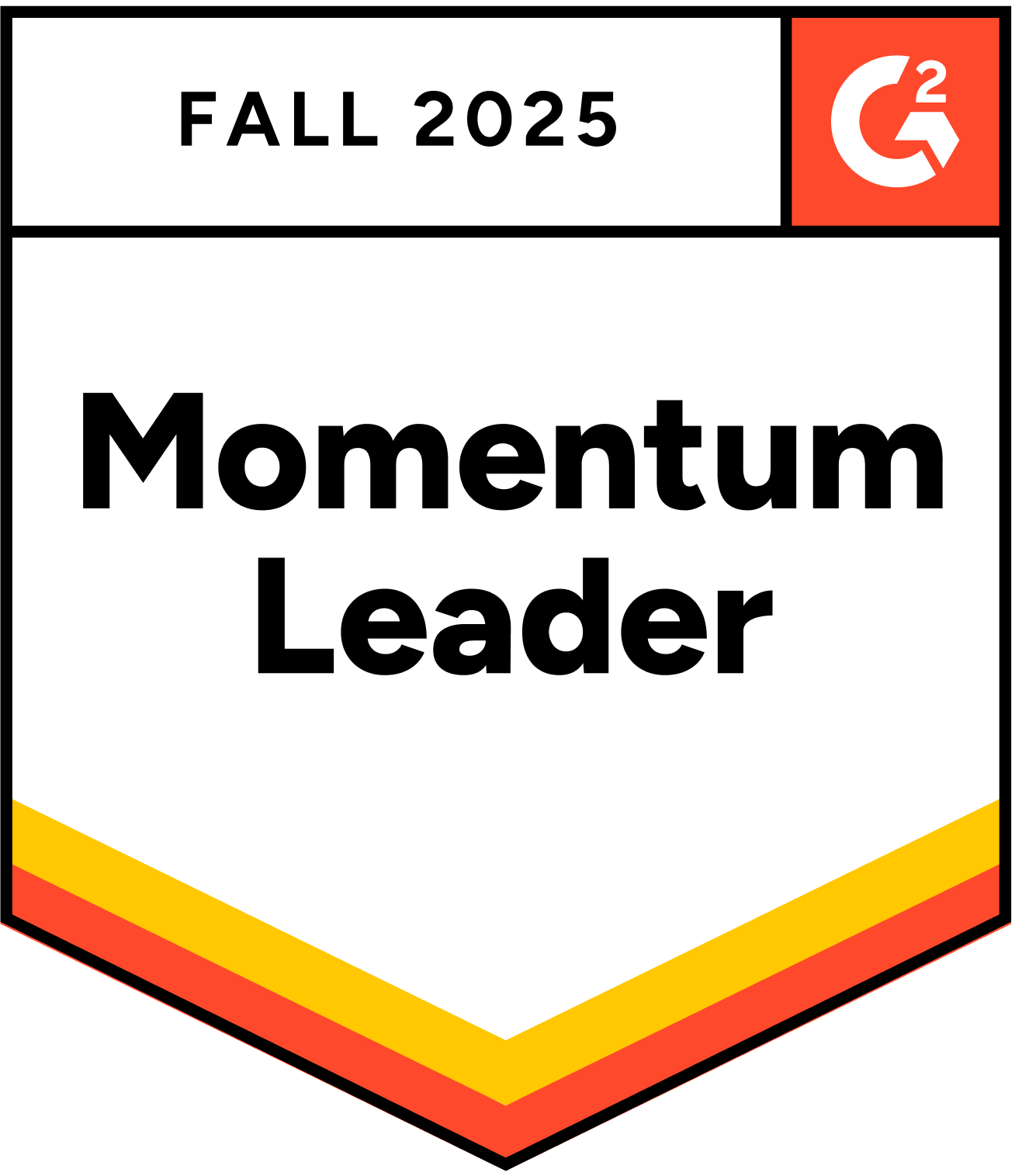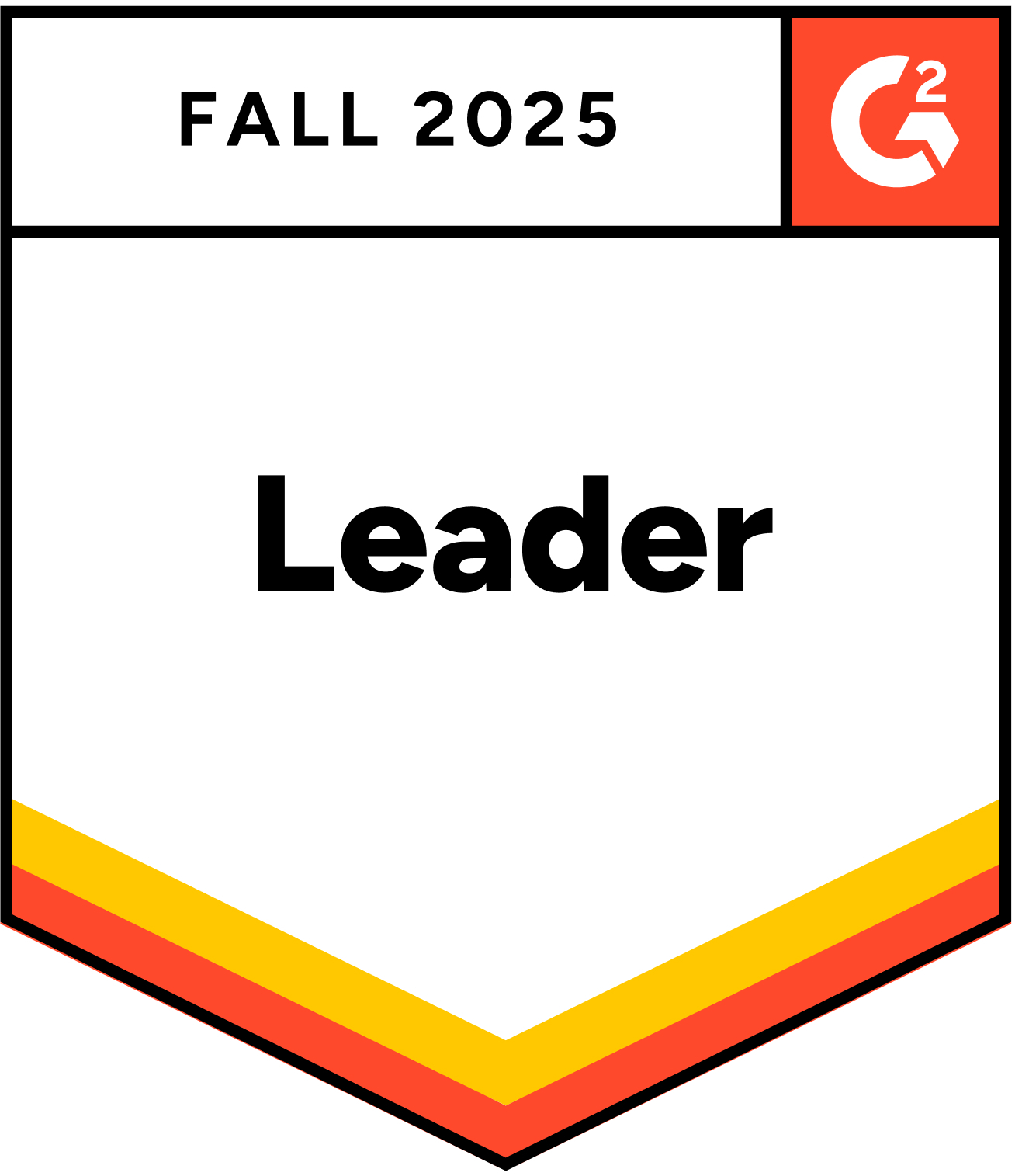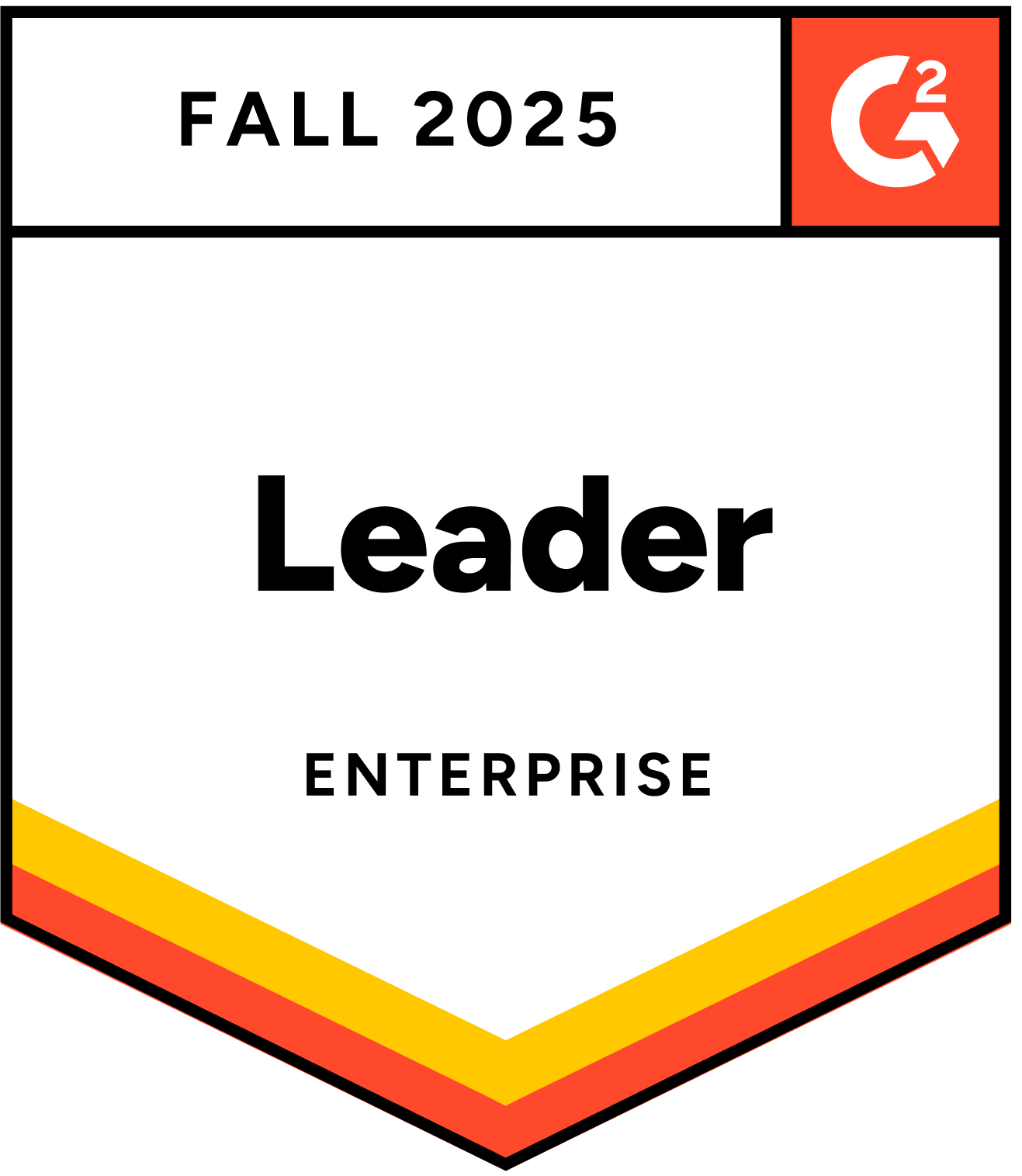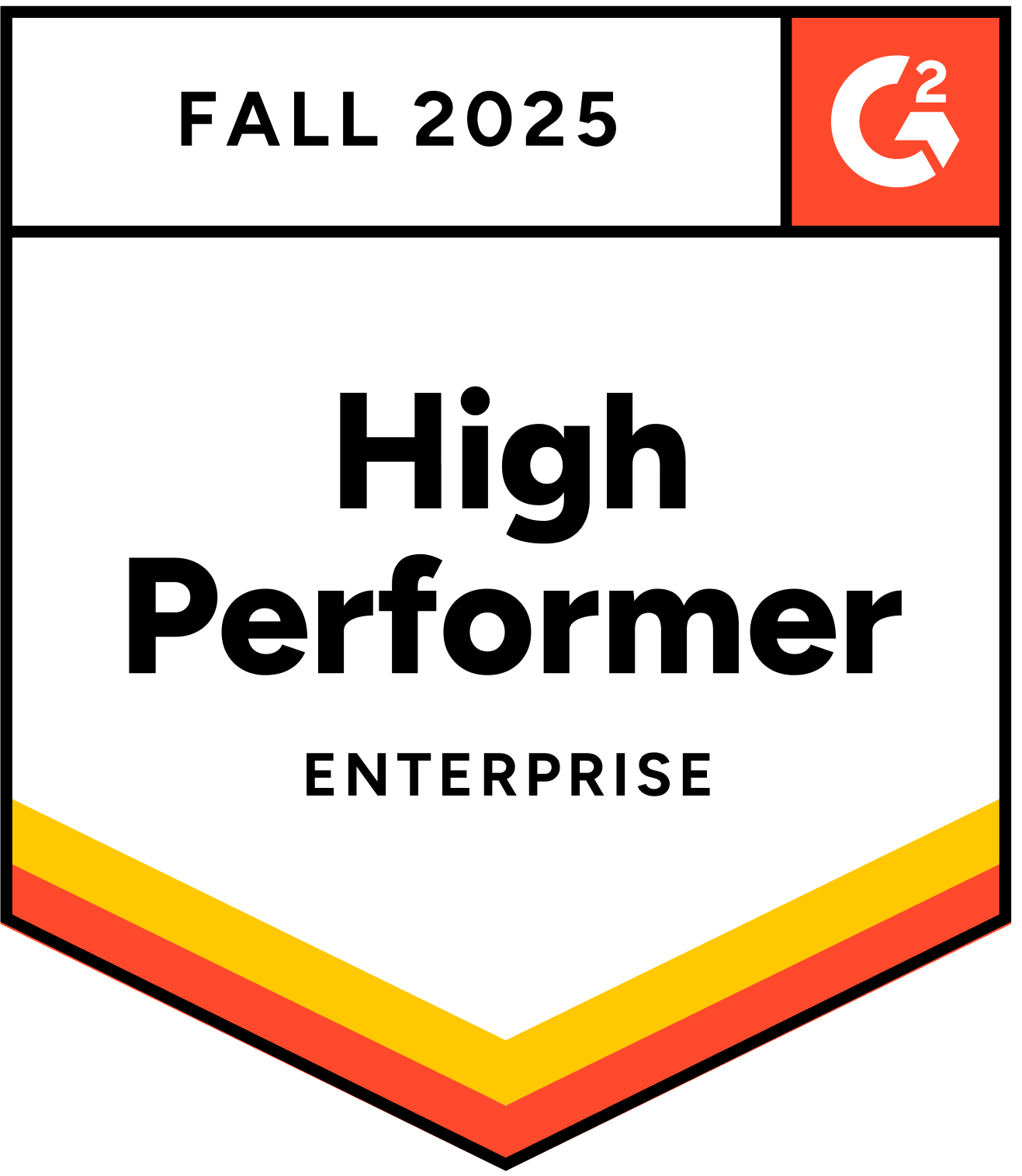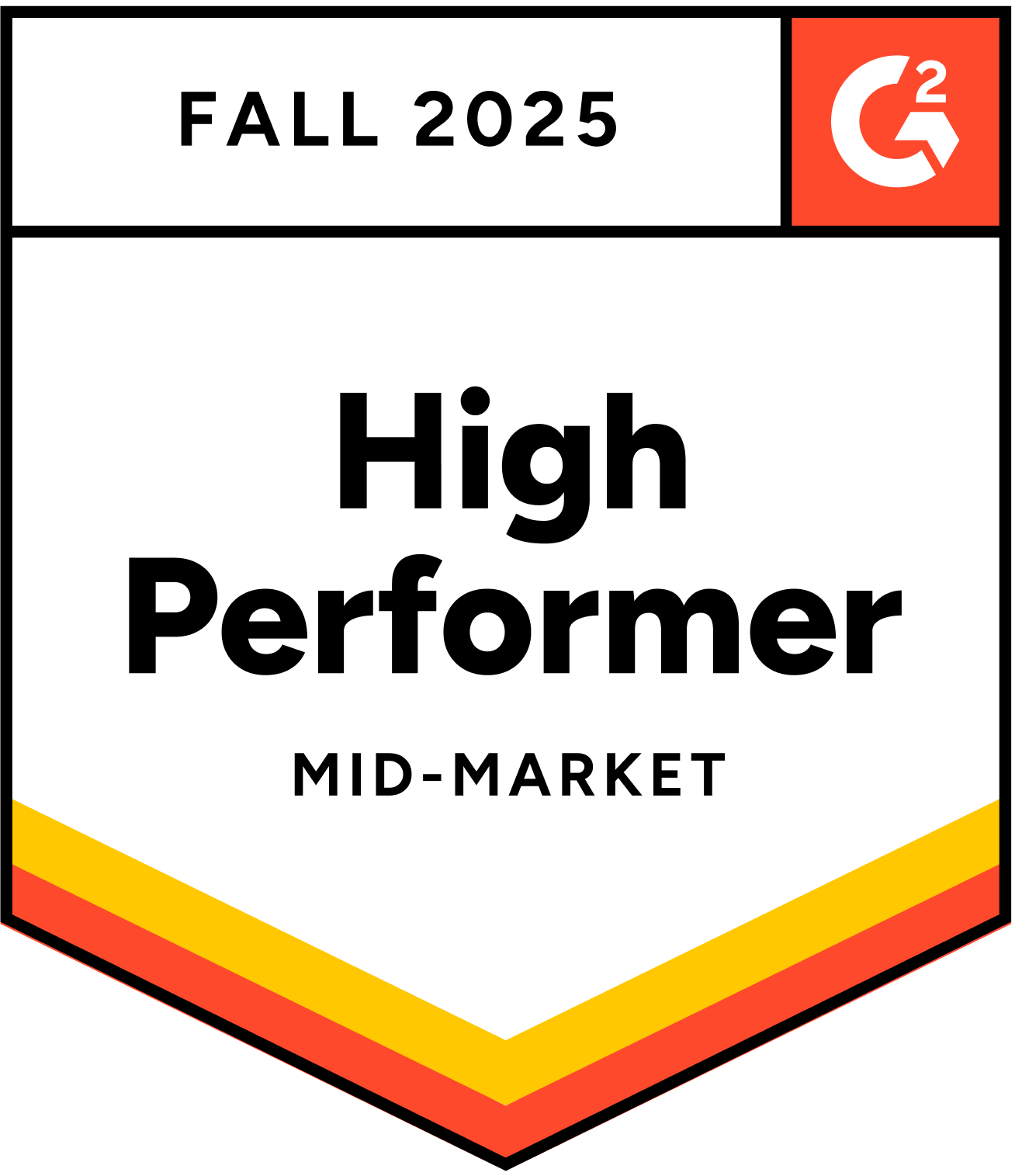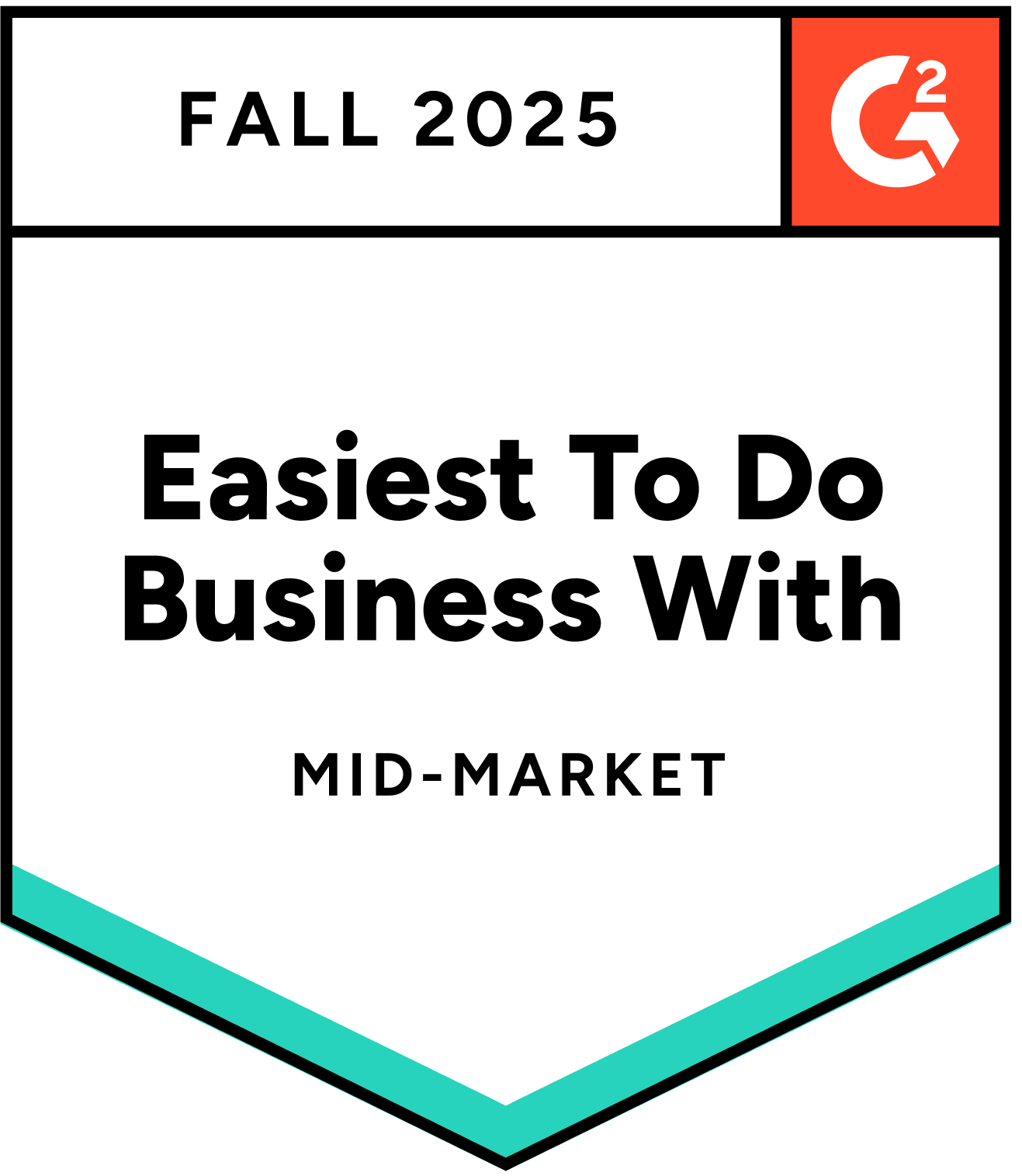What is programmatic job advertising?
Programmatic job advertising (or programmatic recruitment advertising) is the use of technology for buying, placing (distributing), and optimizing job ads – and their associated budget – automatically across the Internet. It is the application of a machine-driven, rules-based approach to buying recruitment (advertising) media that ensures the most relevant and effective use of budget. Here’s how.
- Publishers: by selecting the ones (among hundreds or thousands) that will showcase your job ads to the most qualified and relevant job seekers cost-effectively – using data-driven decisions to eliminate human bias or error
- Timing: by targeting audiences precisely when they are most likely to see your job ads and convert quickly
- Costs: by setting the right bids and budget caps (by job, publisher, etc.) and advertising on the right channels, to avoid both over and under spending. This often involves the use of machine learning and AI to automate the process of bidding on job ad placements across the Internet.
- Traffic: by setting caps to deliver the right volume of relevant, great-fit candidates for your jobs. This ensures you always have an adequate number of applicants for each of your open positions and leftover budgets can be allocated to other hard-to-fill jobs.
To summarize, programmatic job advertising ensures the most qualified job-seekers are targeted with the most relevant job ads on the right channels – at the right time and cost. All of this translates into recruitment with meaningful ROI.
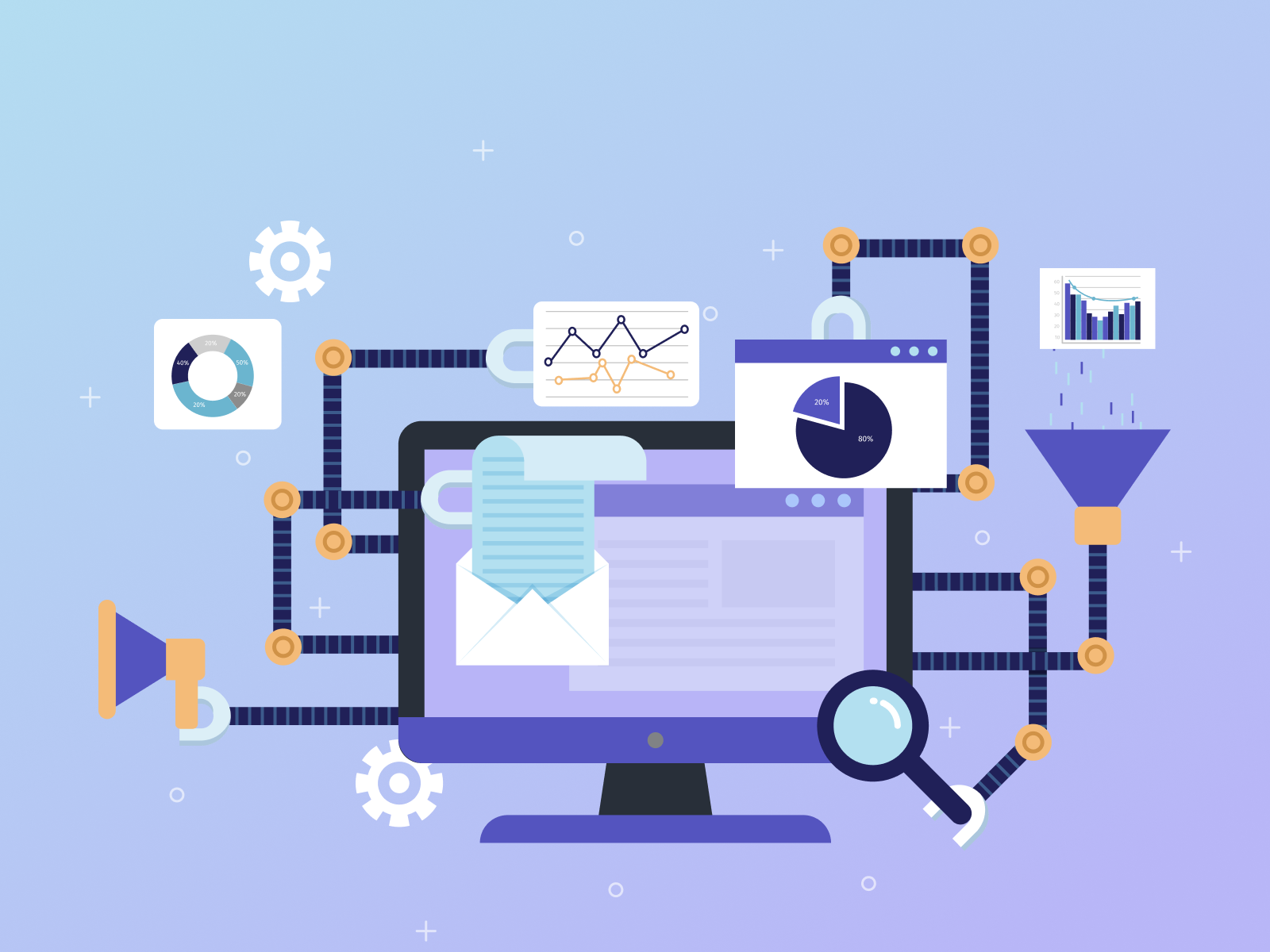
Why You Should Use Programmatic Job Advertising
Cost: Recruitment teams are currently under a tremendous amount of stress in terms of budgets. Most talent acquisition organizations or staffing/RPO teams are operating with reduced and uncertain budgets, forcing them to explore more creative and cost-effective ways to source the most qualified talent.
Candidate relevance and quality: Whether you’re hiring a truck driver, a registered nurse, an entry-level customer service executive, or a data scientist, finding and attracting the right talent has always been hard.
Transparency:Recruitment marketing teams may also be painfully unaware of how their talent sources are really performing when it comes to hiring outcomes and related costs. This lack of transparency could be due to either their reliance on post-and-pray job sites or the lack of visibility into down-the-funnel metrics beyond cost per click (CPC) or cost per applicant (CPA). The ability to compare these metrics – all the way from click to application to hire – in real-time across various job sites, as well as search engine job ads and social media, is non-existent in most platforms.
Efficiency and productivity: The job advertising landscape is vast, complicated, and confusing. There are thousands of job boards, publishers, social and niche sites on which you can post job ads. Each of these sites may or may not attract the qualified talent you’re looking for. On top of that, there’s a host of job ad placement types, including CPC, CPA, slots, duration-based posts, Google Ads, and so on.
With all of these different options, how can your internal talent acquisition team know which types of posts and which channels will work the best for your needs? Traditional recruitment advertising is rife with inefficiencies. It takes a lot of time and effort to manage multiple job advertising vendors or publishers, collect and consolidate data, and track spending.
Without a practical way to work with hundreds of publishers, most recruitment teams limit themselves to the ones that bring in the most volume or deliver the lowest CPC – regardless of whether or not they are the most economical (in terms of cost per hire or CPH), or even offer the highest candidate quality.
In addition, as many organizations are currently running lean recruitment teams, it becomes essential to enhance recruiter productivity and ensure their time is spent on doing the job they typically know best, which is interviewing, hiring, and onboarding candidates. These teams need the right resources and technology.
Predictability: Finally, there’s the issue of lack of predictability and consistency in delivering hiring outcomes. Here’s where data-driven job recruiting shines. The ability to predict what your top (and most cost-effective) sources will be for a particular position you’re trying to fill – and how much recruitment advertising budget you really need – can be a huge advantage, especially as you’re trying to do more with less.
How Programmatic Job Advertising Works
Programmatic job advertising offers a lot more than just automatically distributing your job ads at scale. With the use of machine learning and AI, it continually optimizes your job ad placements and bids based on down-the-funnel metrics such as your hiring outcomes and cost per hire. A programmatic job advertising platform has the following components:
Intelligence
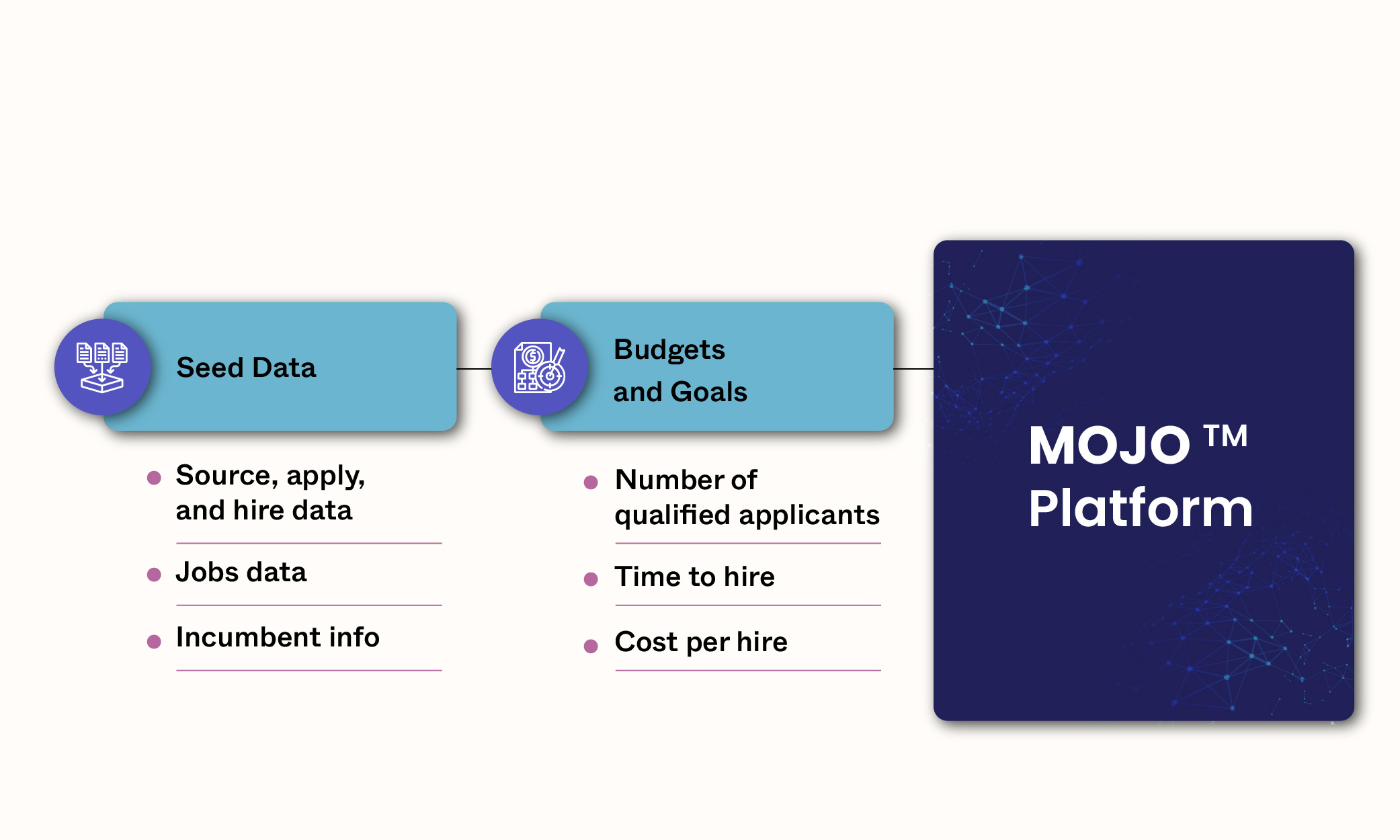
This involves a way to ingest and gather all your current and historical data, including your job requisition data; source, apply, and hire data; and any other data from your current or previous recruitment marketing efforts. This constitutes your “seed data.”
The programmatic job advertising platform then overlays your seed data with your budget and goals (number of hires/qualified applicants, cost per hire, time to fill, etc.), to create your target and lookalike (similar) audiences – not only to meet your current recruiting goals, but to also prepare for your future hiring needs.
These are the “rules” that ensure that you stay on track and maintain discipline at every step along the way.
Campaign management
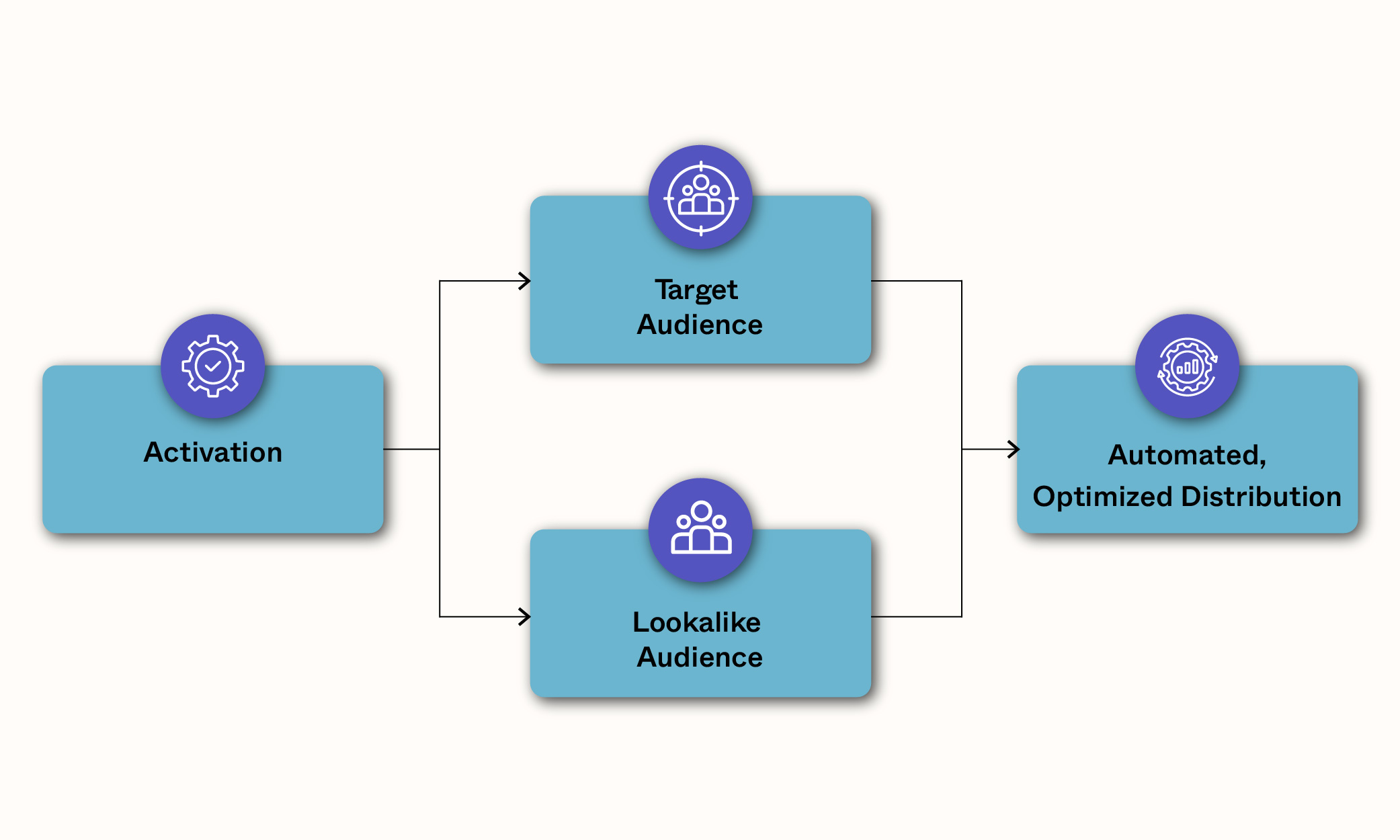
This is where a programmatic job advertising platform activates your data to inform recruitment media buying decisions, create rules, and provide machine learning-based recommendations, so you can automate and optimize your job distribution based on your goals.
This enables you to buy media from the most effective sources (where the most qualified job seekers are) with the highest ROI, when you need it and for the right amount of time.
This unbiased, data-driven, and automated media planning and buying has helped businesses source up to two times more qualified candidates, while reducing their cost per hire by up to 50%.
Insights
Here, you can track and analyze the performance and costs of all your recruitment media (including job boards, search engines, and social media) – via a centralized dashboard – from click to hire. All your recruitment advertising data is crunched to generate real-time insights on ad performance and costs at a campaign, publisher, job group, and ideally at a job level too.
This component provides you with end-to-end visibility and control of your entire job advertising process, whether you’re working with pay-per-click (PPC) job boards, duration-based postings, slot-based job boards, search ads, display ads, social ads, or even organic options. It allows you to compare all your digital candidate sources, apples-to-apples, and easily identify the ones that are delivering the most (and the least) ROI.
Learned intelligence
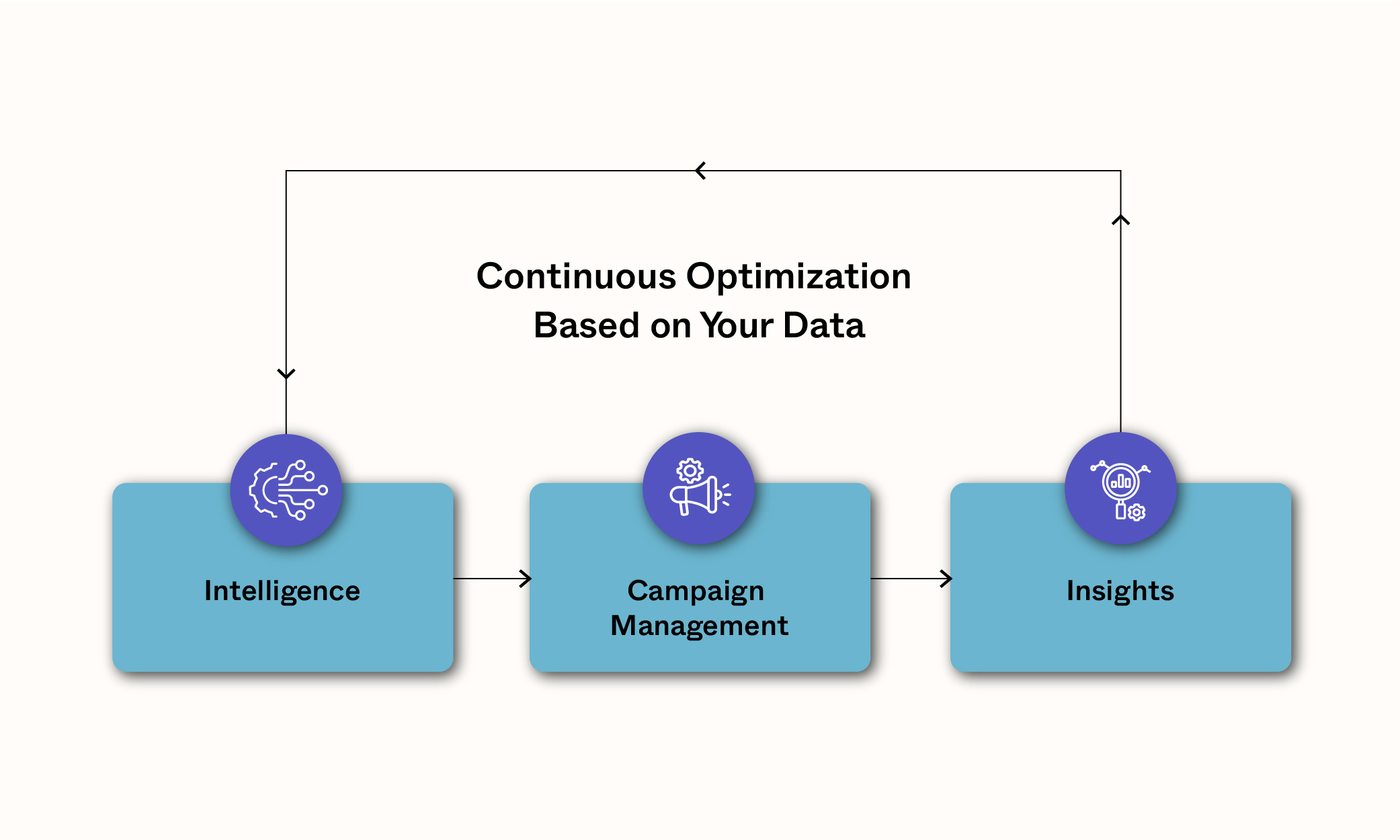
This creates a virtuous cycle, so your insights, outcomes, and learnings flow back into the intelligence gathering component of the platform to inform subsequent media buying decisions. This leads to continuous optimization and improvement of your recruitment advertising process and results, eliminating any guesswork typically involved in traditional job advertising.
With AI-powered job recruiting and a constant feedback loop, your hiring outcomes and costs also become much more predictable and consistent over time.
Benefits of Programmatic Job Advertising
Lower cost per hire and greater control on spend
This is one of the most obvious benefits of programmatic job advertising. A programmatic recruitment advertising platform enables you to allocate budgets at multiple levels: campaign, job group, job (ideally), publisher, and more.
It also allows you to track performance and costs across all your media – whether it’s job slots, pay-per-click publishers, duration-based job boards, Google, Facebook, or others – via a single, centralized dashboard. You can easily compare and understand how individual channels are performing and contributing – and use those insights to drive job advertising decisions.
Furthermore, your programmatic job advertising solution enables you to avoid wasting your recruitment marketing dollars on non-performing job boards, bot clicks, and intermediary fees. You can ensure your job ads are distributed only on the most cost-effective publishers – and your media buying strategy is aligned with your cost goals. All of this drives down your cost per applicant, as well as cost per hire.
Our clients typically see a 20-50% reduction in cost per applicant (and cost per hire) and a proportionate increase in recruiting ROI.
Higher qualified/relevant applicant volumes
Qualified and relevant – these are important words when it comes to recruitment. You can spend an enormous amount of money on the post-and-pray approach to job advertising and get hundreds or even thousands of applications. But how qualified or relevant are they? In other words, how many of them have a high probability of turning into actual hires? Without the right applicants, the volume of applications is worthless.
A major benefit of programmatic recruitment advertising is that it ensures your job ads are targeting the most qualified and relevant job seekers for your specific needs. Intelligent, automated optimizations allocate spend to the best fit publishers, where you’re more likely to find these candidates. As a result, the number of qualified and relevant applicants, which have a significant probability to convert into hires, is much better.
Greater reach
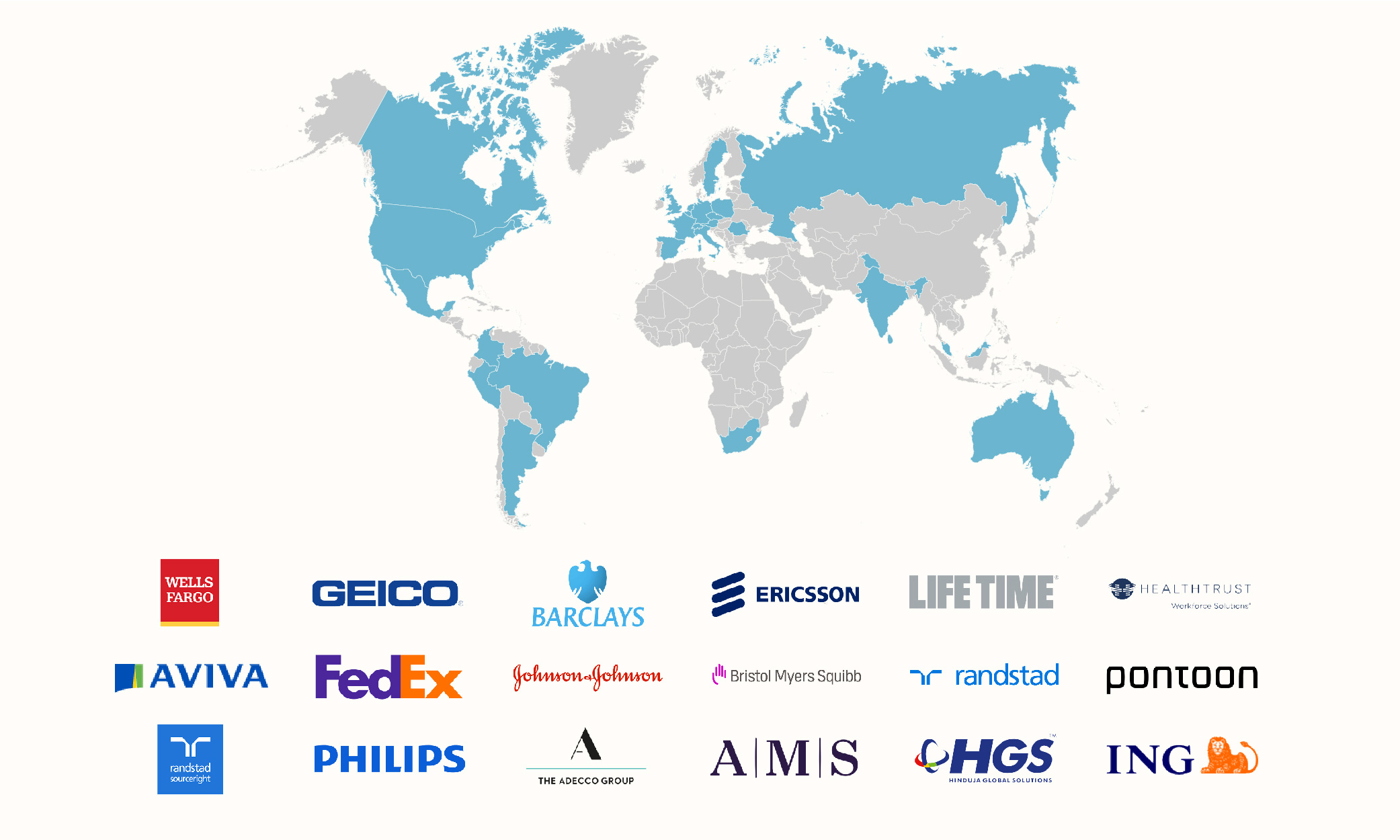
There are thousands of job boards and publishers. Programmatic job advertising enables you to get your job ads in front of more job seekers globally, especially on sites that will deliver the best (and most cost-effective) results for your business. This might include niche job sites that you may be unaware of, but can potentially deliver exceptional hiring outcomes. You can also find and engage passive job seekers that aren’t on job boards but on the rest of the World Wide Web, visiting Google, Facebook, or their favorite lifestyle websites.
It is worth noting that a truly global reach will require a programmatic job advertising platform to support multiple languages and currencies, in addition to international publisher networks.
Significantly more productive recruiters
A lot of businesses today are operating with lean recruiting teams. Improving recruiter productivity is one of the top priorities of talent acquisition leaders around the world.
Automating repetitive tasks can go a long way in making talent acquisition and recruitment marketing teams more productive. Programmatic job advertising saves a massive amount of time for recruiters and talent acquisition professionals as it removes the manual labor involved in posting, managing, and optimizing job ads across a multitude of channels and interfaces (job boards, social channels, and other sites used for finding and recruiting candidates).
This allows them to not only spend more time on people-centric functions, such as interviewing, screening candidates, hiring, and onboarding, but also operate at a much larger scale and manage vastly more expansive programs than traditional methods.
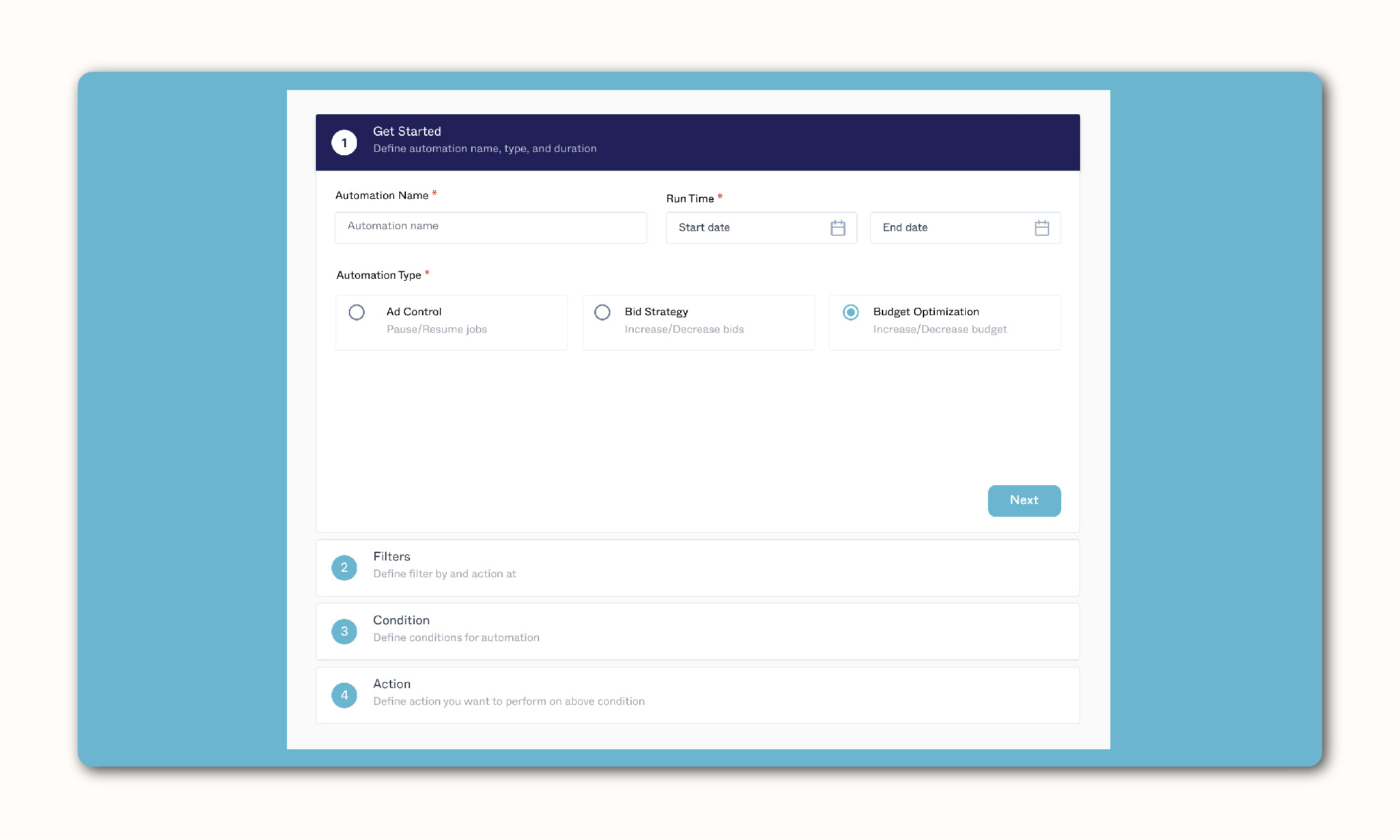
Faster time to hire: The increase in relevant applicant volume as well as the efficiency of programmatic job advertising technology reduces the time it takes to deliver hires. For many of our clients, their time to hire has been reduced by 35% or more.
Exceptional candidate experiences: A great programmatic job advertising platform should also enhance your job application experience, therefore, improving your click-to-apply conversion rates.
This includes simplifying the job application process and ensuring it’s optimized for all devices, especially mobile. Mobile optimization of search and apply processes is critical to delivering great candidate experiences.
One of the factors that contributes heavily to a bad job seeker experience is over sourcing. For every job for which you say “yes” to two out of 100 candidates, you say “no” to 98 others. You would be far better off if you don’t push 98 of the “no” candidates into your funnel. Controlling applicant volume via programmatic job advertising (by setting caps on the number of qualified applications for a certain role) can be extremely useful in enhancing overall candidate experience and improving your employer brand.
Retargeting
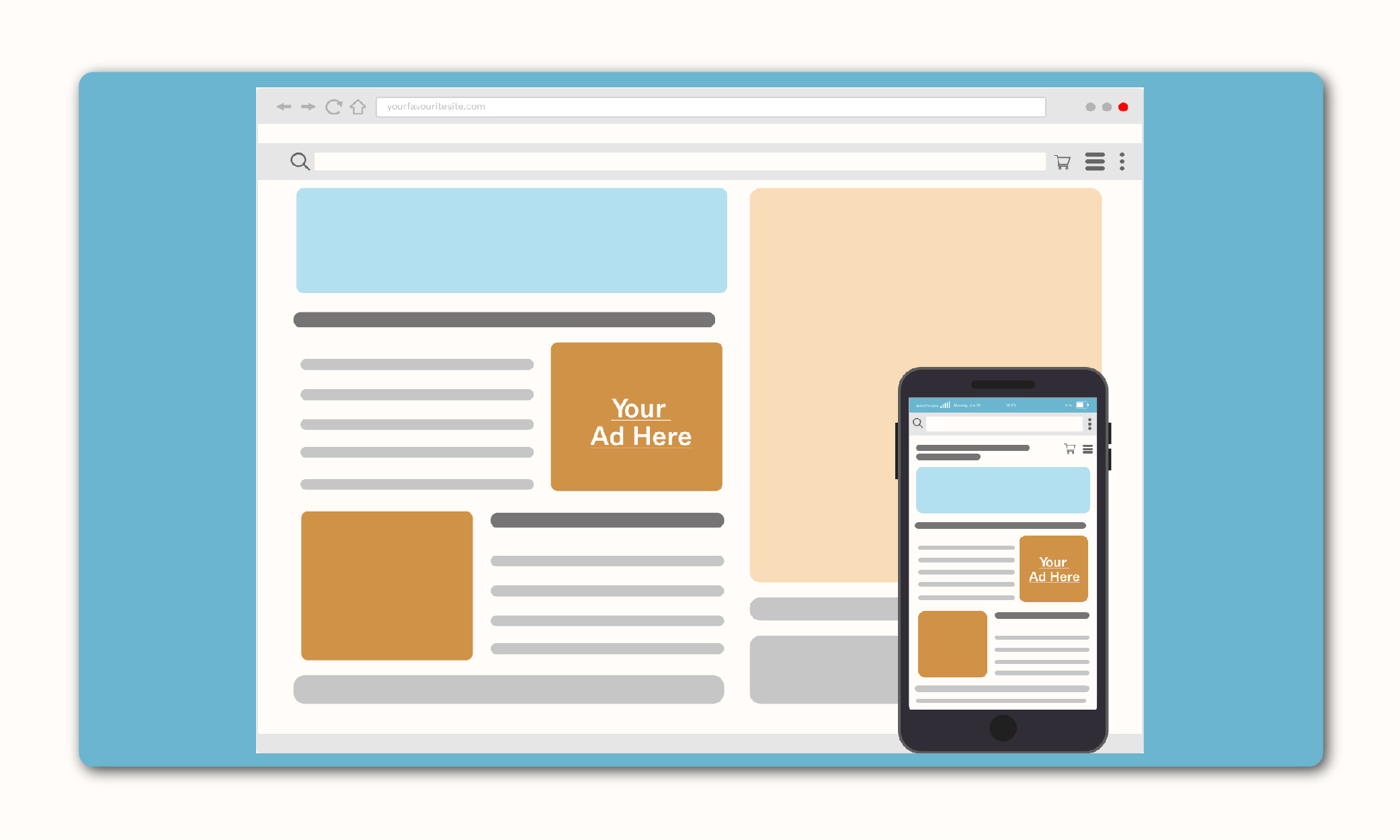
A modern programmatic job advertising platform should allow you to retarget job seekers that started applications, but for whatever reason, dropped off without completing them. The ability to re-engage such candidates – by sending them targeted messages and nudging them to finish their application process – can be very powerful in delivering a high number of qualified applications at a low CPA.
Real-time tracking of performance and cost
One of the most desirable benefits of programmatic job advertising is its ability to deliver end-to-end visibility (transparency) into your recruitment advertising.
In traditional job advertising, real-time tracking of performance and cost across all media was next to impossible. Even when you did get data at, say, the end of a month, collating it across all the varied sources (slot or duration-based publishers, pay-per-click job boards, Google, etc.) and then having someone adapt it to a pre-agreed format and redistribute it for analysis, took so much time that it served little to no practical purpose by the end of the exercise.
With a programmatic recruitment advertising platform, you know precisely where your precious job advertising dollars are going, in real-time. You can track performance and costs across all your recruitment media – job boards, search engines, and social media – from clicks to applications to hires. You can also slice and dice the data any way you want – across campaigns, jobs, publishers, and more – based on your needs.
You can answer questions such as: How did this budget work? Do we need to raise the budget? Do we have enough candidates for this job? Do we even need to sponsor these jobs, or can we fill them with organic results without having to spend anything?
With such robust data, analytics, and insights, you can make intelligent, informed, and effective recruiting decisions that drive maximum ROI – at every step of the job seeker journey.
Questions To Ask Your Programmatic Job Advertising Platform Provider
There are a number of options when it comes to selecting a programmatic job advertising platform for your recruitment needs, so it can be challenging to determine which one is right for your business.
Whether you are looking to deploy such a solution for the first time and evaluating different solution providers – or re-evaluating your existing programmatic recruitment vendor (or even re-negotiating your contract with them), it is imperative to have a deep understanding of the platforms’ capabilities to best serve your needs not just today, but in perpetuity – because hiring, for the most part, is an ongoing business process.
Given the complex and fragmented nature of the talent acquisition landscape, the more specific your questions, the better your understanding and selection will be. Here are the top questions to ask:
Job ad targeting options
- Which online recruitment marketing channels do you support?
- How many job boards (or publishers) is your solution compatible with?
- Can your platform/team buy and manage media across all required job boards?
- Can your platform advertise jobs and target both active and passive job seeker audiences on
Google, social channels, and the whole World Wide Web? - Can we manage our existing slots and duration-based postings from the same platform?
- Is your job ad targeting limited to specific countries? If so, which ones?
Segmentation and automation capabilities
- Can your platform allocate budgets and goals at the campaign, job group, and job levels?
- Can your platform showcase insights by campaign, job group, and job?
- Can your platform optimize and set up automation rules and expansions down to the job
level? - What media buying channels or publishers does your platform automate (CPC, CPA,
duration-based and slot job boards, Google, Facebook, etc.)? - How long does it typically take for a user to learn how to use automations?
- Does your platform recommend publishers based on performance goals?
Tracking and analytics
- Can your platform track all our required metrics – from click to hire – in a single dashboard?
- Can you track metrics across all our online sourcing channels – job boards, search engines,
organic, and social – in one platform? - Can your solution track candidate conversions across any channel (universal conversion
tracking)? - Does your platform indicate how many organic applications a particular job has received?
- Is your dashboard customizable?
- What types of reports can be generated?
Job application experience
- How do you ensure a great job application experience?
- Does your job application experience improve the number of applications as well as click-to-
apply conversions? - Can you optimize the applications for all devices?
- Can you re-target and re-engage relevant job seekers that did not complete their
application?
Product usability
- How much training is necessary to use the platform?
- How quickly will my team be up and running?
Service and support
- What are your levels and hours of support?
- Do you offer managed services? Do you assist in setting up campaigns?
- What is your implementation process?
- What level of technical assistance do you provide?
- Are there costs for support? If so, how much?
Pricing
- What is the cost structure of your self-service model?
- Is pricing based on a percentage of media spend? Is there a fixed fee option?
- If you offer managed services, how much is the additional cost?
- Are there minimum spend levels or commitments?
Global presence
- Which geographical markets is your solution best suited for?
- Does your platform support multiple languages? Which ones?
- Does your platform support multiple currencies? Which ones?
- Can our globally distributed teams have centralized visibility into data across multiple
geographies or regions? - What are your market expansion plans?
Vendor due diligence
- How big is your R&D team? What’s the percentage of engineers/developers out of all
employees? - When was the last time your platform had a new feature release?
- How often do you release product updates and enhancements? Are they based on customer
input? Are there any associated costs? - What are some of the features on your product roadmap?
- Who are some of your clients? Can I speak to a couple of them about their experiences?
To learn about Joveo’s award-winning programmatic job advertising platform, sign up for a free demo!
FAQs
What is programmatic job advertising?
Programmatic job advertising uses AI to automatically place and optimize job ads across multiple online channels. It helps employers reach the right candidates at the right time, using data and real-time insights to boost efficiency, cut unnecessary spending, and improve overall hiring results.
What is meant by programmatic advertising?
Programmatic advertising refers to the automated process of purchasing and placing ads online using AI, algorithms, and real-time data. It removes manual negotiation, allowing for precise audience targeting, faster campaign adjustments, and optimized ad performance across digital platforms, including recruitment campaigns.
What are programmatic ads examples?
Programmatic ads include automatically placed job listings on job boards, sponsored posts on social media, and display banners shown to relevant audiences. For recruitment, they can be across Google, LinkedIn, Facebook, and niche sites – all targeted dynamically to attract qualified candidates.
How does programmatic job advertising work?
Programmatic job advertising uses real-time bidding and AI algorithms to decide where, when, and how job ads appear. The platform distributes ads across channels, adjusts bids based on performance, and reallocates budgets automatically to ensure optimal visibility and conversions.
What are the key benefits of using programmatic job advertising?
Programmatic advertising delivers smarter targeting, higher efficiency, and better ROI. It automates ad buying, optimizes spend, and reaches qualified candidates faster. Employers get real-time insights, improved conversion rates, and the ability to scale recruitment campaigns without increasing manual effort.
How does programmatic job advertising improve recruitment efficiency?
It improves efficiency by automating ad placements, optimizing budgets in real time, and prioritizing channels that deliver the best results. This reduces time spent in managing campaigns and ensures recruitment teams attract more qualified candidates in lower budgets.
Why should you use programmatic job advertising?
Programmatic job advertising helps you make data-driven hiring decisions, reduce wasted ad spend, and improve quality of hire. By automating targeting and optimization, it simplifies recruitment marketing and ensures every campaign reaches the right audience at the right cost.
Is programmatic job advertising suitable for all types of businesses?
Yes. Programmatic job advertising benefits organizations of all sizes and industries. Whether hiring at scale or for niche roles, automated ad distribution ensures the right visibility, optimizes budgets, and adapts easily to different hiring volumes and needs.
Can small companies benefit from programmatic job ads?
Absolutely. Programmatic platforms help small businesses compete with larger employers by automating ad placement, optimizing budgets, and targeting specific candidate groups. It’s a cost-effective way to expand reach, improve efficiency, and hire faster without increasing marketing resources.
What should I consider when choosing programmatic advertising software for recruitment?
Look for transparency, AI-driven optimization, integration with your ATS, and detailed reporting. The platform should support multi-channel distribution, real-time bidding, and budget control. Ease of use, customer support, and data accuracy are also important factors when evaluating programmatic solutions.
What are the best platforms for programmatic recruitment marketing?
Leading platforms include Joveo, which automates job ad delivery across search, social, and display channels with real-time optimization and analytics. Others include Appcast, PandoLogic, and Recruitics. The best choice depends on your hiring goals, integrations, and scalability needs.
What questions should you ask your programmatic job advertising platform provider?
Ask about transparency in spend and performance, AI capabilities, integration with your ATS, and how campaigns are optimized. It’s also important to know what reporting is available, how targeting works, and what level of ongoing support the provider offers.
How can employers ensure their programmatic job advertising campaigns are successful?
Employers can ensure success by defining clear hiring goals, tracking key metrics, and continuously optimizing campaigns. Using AI-powered platforms (like Joveo!) helps monitor performance in real time, reallocate budgets effectively, and improve targeting for higher-quality applications.
How can I get started with programmatic job advertising?
Start by defining recruitment goals, setting a budget, and choosing a reliable programmatic platform like Joveo. Integrate it with your ATS, launch pilot campaigns, and track performance metrics such as cost per application, conversion rate, and source efficiency.
Looking to streamline your recruitment efforts?
- Try our Job Description Optimizer for quick, effective job descriptions.
- Forecast your ad spend with the CPA Calculator.
- Need help choosing vendors? Explore our RFP Templates for expert guidance.
Also read:
The Ultimate Guide to Talent Sourcing [2025]

The Ultimate Guide to Career Sites [2025]

The Ultimate Guide to Diversity Hiring [2025]

The Ultimate Guide to AI in Recruiting [2025]

The Ultimate Guide to Recruitment Marketing [2025]
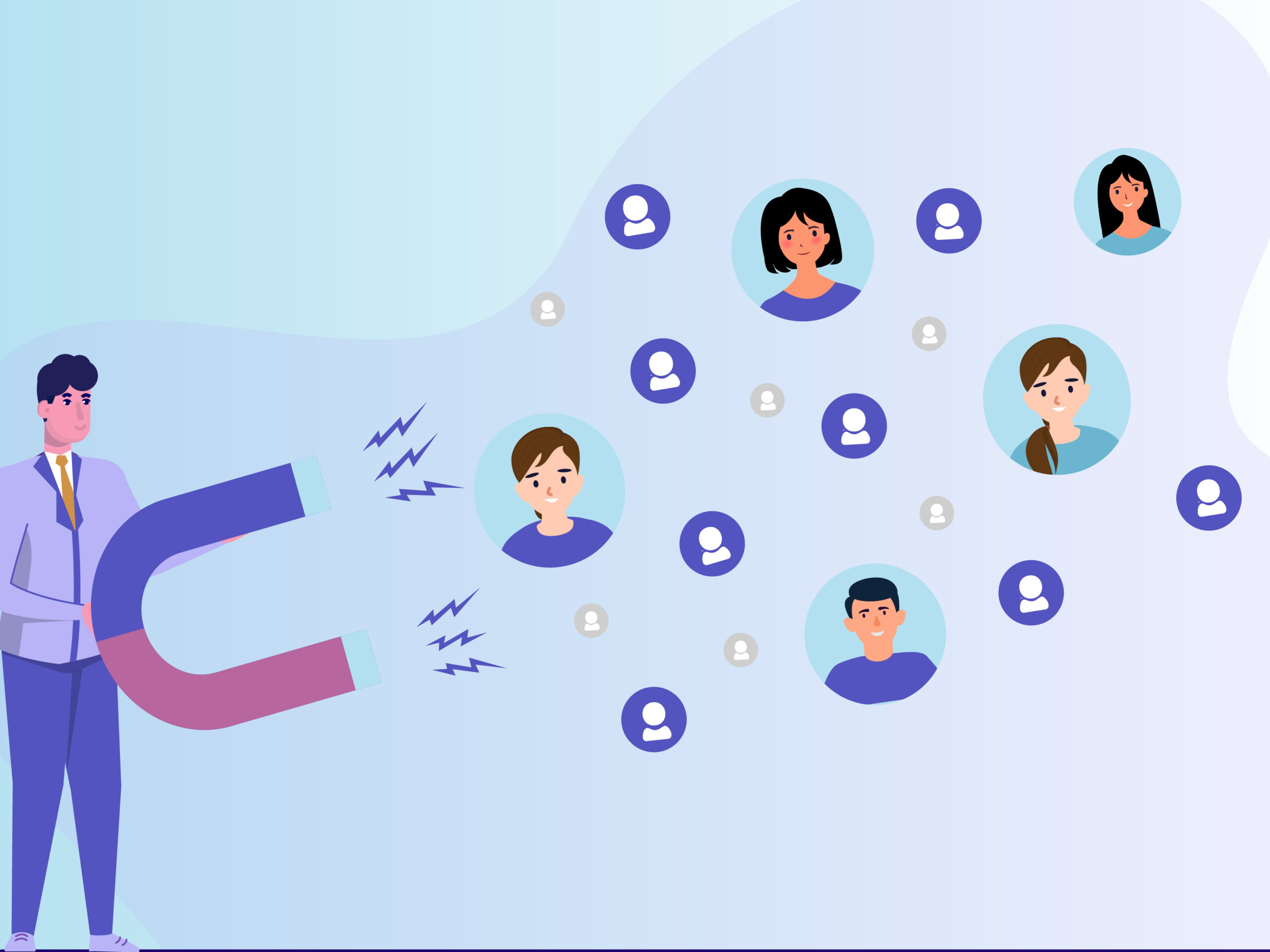
The Ultimate Guide to Employer Branding [2025]

Employee Value Proposition (EVP): The Ultimate Guide [2025]

The Ultimate Guide to High-Volume Recruiting [2025]

The Ultimate Guide to Candidate Experience [2025]

Google for Jobs: The Ultimate Guide [2025]

The Ultimate Guide to Posting and Advertising Jobs on Meta/Facebook [2025]
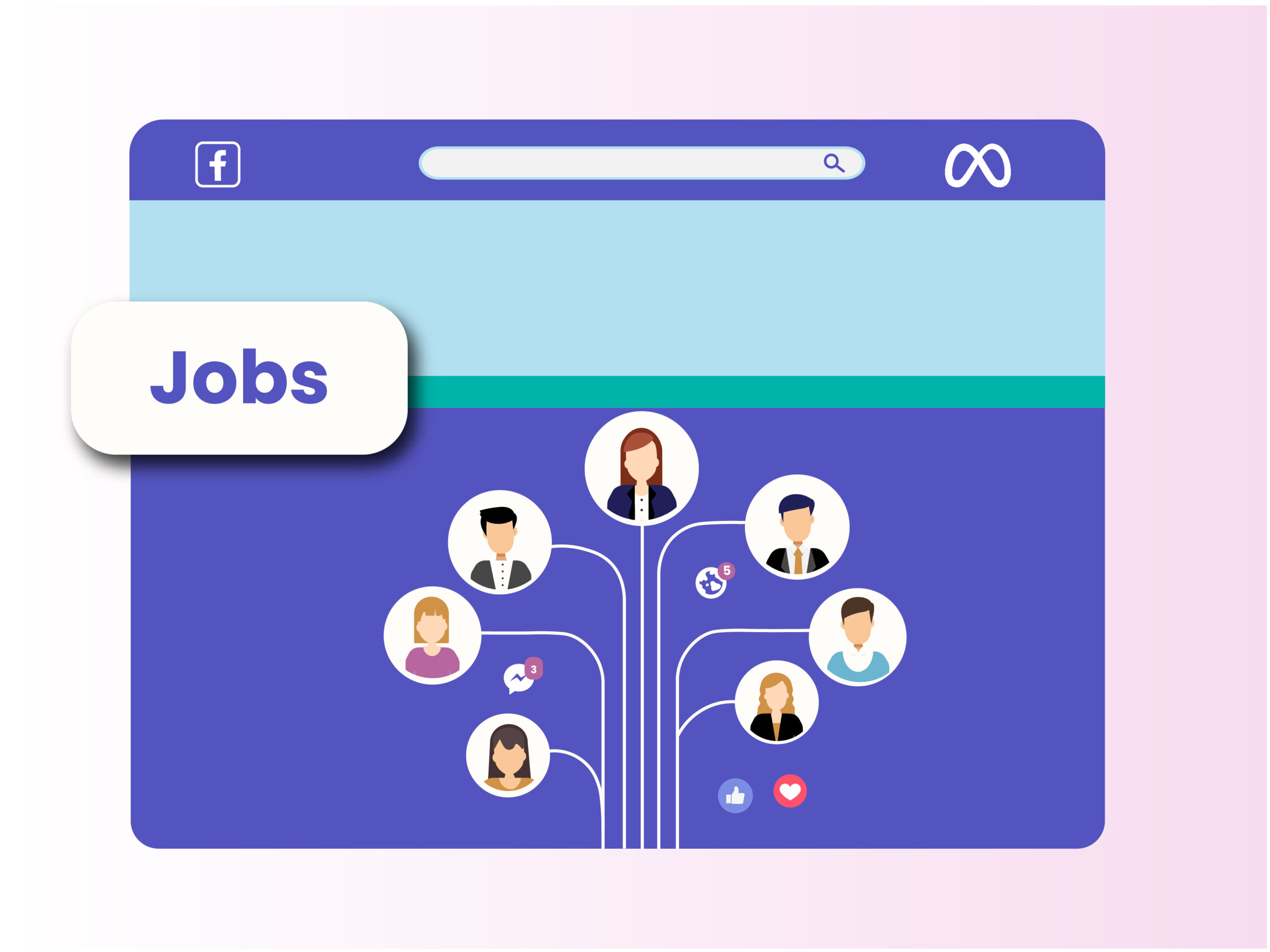
The Ultimate Guide to Candidate Relationship Management: Recruitment CRM in [2025]



